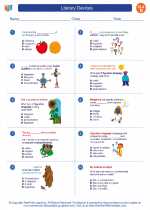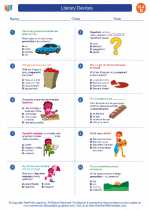Poetry Study Guide
What is Poetry?
Poetry is a form of literature that uses aesthetic and rhythmic qualities of language—such as phonaesthetics, sound symbolism, and metre—to evoke meanings in addition to, or in place of, the prosaic ostensible meaning.
Types of Poetry
Sonnet: A poem of 14 lines using any of a number of formal rhyme schemes.
Haiku: A traditional form of Japanese poetry consisting of three lines with a syllable count of 5, 7, 5.
Limerick: A humorous poem consisting of five lines with a specific rhyming pattern.
Free Verse: Poetry that does not rhyme or have a regular meter.
Poetic Devices
Alliteration: The repetition of initial consonant sounds in neighboring words.
Metaphor: A figure of speech in which a word or phrase is applied to an object or action to which it is not literally applicable.
Simile: A figure of speech involving the comparison of one thing with another thing of a different kind, using the words "like" or "as".
Personification: The attribution of human characteristics to something non-human.
How to Analyze Poetry
- Read the poem multiple times to understand its literal meaning.
- Identify poetic devices such as metaphors, similes, and imagery.
- Consider the poem's structure, rhyme scheme, and meter.
- Reflect on the emotions or ideas the poem conveys.
Sample Questions
Question 1: What is the main difference between a sonnet and a haiku?
Answer 1: A sonnet is a 14-line poem with a specific rhyme scheme, while a haiku is a three-line poem with a syllable count of 5, 7, 5.
Question 2: Describe the poetic device used in the line "The stars danced playfully in the moonlit sky."
Answer 2: The poetic device used in this line is personification, as it attributes human characteristics (dancing) to the stars.
[Poetry] Related Worksheets and Study Guides:
.◂English Language Arts Worksheets and Study Guides Fourth Grade. Literary Devices

 Worksheet/Answer key
Worksheet/Answer key
 Worksheet/Answer key
Worksheet/Answer key
